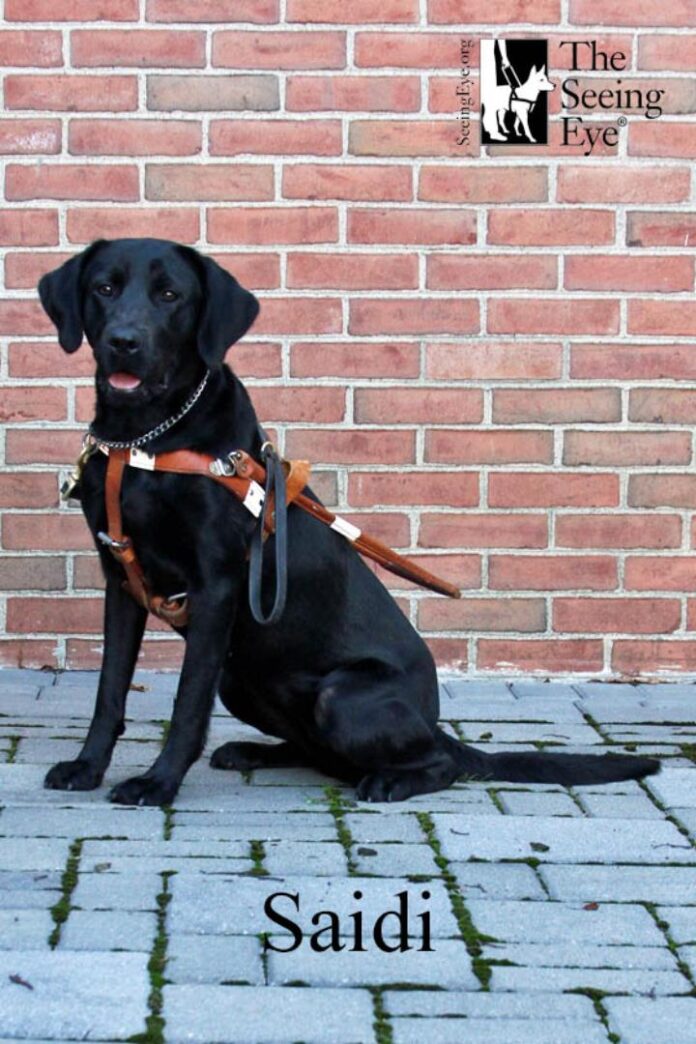Seeing Eye dogs — also known as guide dogs, if they are not from The Seeing Eye school — are working dogs. Often, people confuse Seeing Eye/guide dogs and service dogs, and even I — a fully blind person with my Seeing Eye dog, Saidi — find that I am often correcting misunderstandings or educating others on the dos and don’ts of my working dog. Even though similar rules can apply to service dogs, the primary focus of this article is Seeing Eye/guide dogs as that is where my personal experience lies, as well as the unfortunate reality that many do not know the particulars of guide dogs due to their limited experiences with them.
DON’T: Pet, feed, or distract
This is often the hardest one for people to respect. Guide dog handlers such as myself often hear the excuse that one could not resist reaching out to pet our dog, but it can be helped. Just because something looks appealing to us does not give us the right to go forth and take it, touch it, etc. So why is it often different with dogs? If we don’t let this excuse fly in other situations then it should not be a valid one in this case. The reason why this is one of the most important rules is because breaking it could put both the dog and the handler in harm’s way.
For instance, if I am crossing the street and someone decides to pet Saidi, she is no longer focused on finding the curb or watching out for cars that may not stop. Or, if we are in a restaurant and Saidi had been given human food before, she may think it is alright if she snatches something off the floor or lunges for a stray tomato. This isn’t to say that my Seeing Eye dog or other guide dogs don’t sometimes get certain human foods, but it is usually in a controlled setting and not a daily occurrence.
DO: Know what the equipment means
I will often get asked why Saidi is not wearing a vest, or get told that I should get her one because the harness is not well-known. Guide or Seeing Eye dogs do not wear a vest, but in fact wear a harness when they are working.
The harness allows the handler to feel the movement of the dog’s body as they walk as well as feel the pull of the dog as it is more taught than the leash. Another piece of equipment some guide or Seeing Eye dogs have is called the gentle leader. For guide dogs, handlers use this in conjunction with the leash and collar to discourage sniffing or to make sure that we know if our pup is trying to grab food off the ground. Sometimes we don’t even attach the leash to it since putting the gentle leader on the dog is often sufficient.
DON’T: Grab us
This is important and can help avoid uncomfortable interactions for everyone involved. Sometimes handlers, including myself, are grabbed or have our dog’s leash or harness grabbed by others. Most often this is with good intentions from passers by who — in their defence — believe that they are only helping by pulling us or the dog where they think we are wanting to go. However; this can actually cause more harm and can be a scary experience; not just because one may be blind or partially sighted, but in today’s world no one automatically views being grabbed as a good intention.
The leash and harness that connects the handler and dog is comparable to a steering wheel, thus, grabbing and maneuvering it is similar to grabbing the wheel when someone else is driving. Rather than assuming someone who is blind or anyone needs help always remember to just ask. This way, the person with the dog can also provide you the best way of assisting them, whether that be through verbal directions, or if they wish to hold on to your arm.
DO: Know that the dogs are still animals at the end of the day
Even though Seeing Eye/guide dogs are well trained and well behaved, they are still dogs at the end of the day, and therefore mess up sometimes. Just because these things may happen does not mean a guide or Seeing Eye dog is not properly trained. Most often the handler will either verbally correct the dog or give them a leash correction. As for accidents, sometimes animals get sick or something happens. Personally, Saidi has only had three accidents in the time I have had her.
Saidi is a golden retriever and black Lab mix and comes from the Seeing Eye school in New Jersey and has been with me for a year and a half now. We are always continuing to learn from one another and we hope that this article will help others learn more about us and guide dogs in general.


